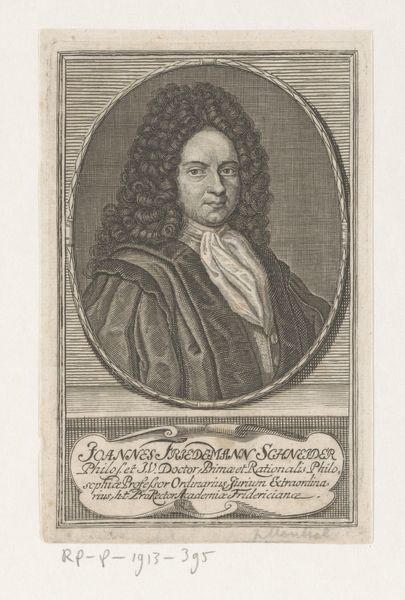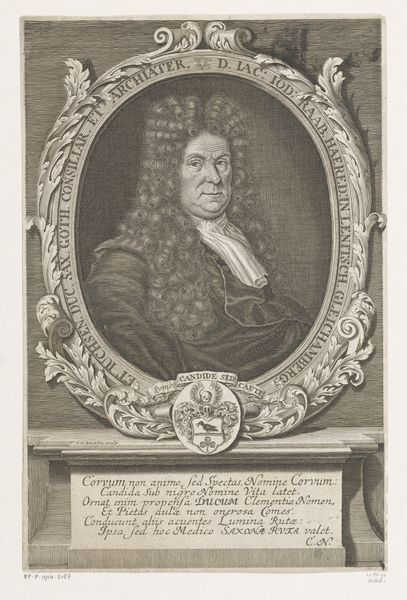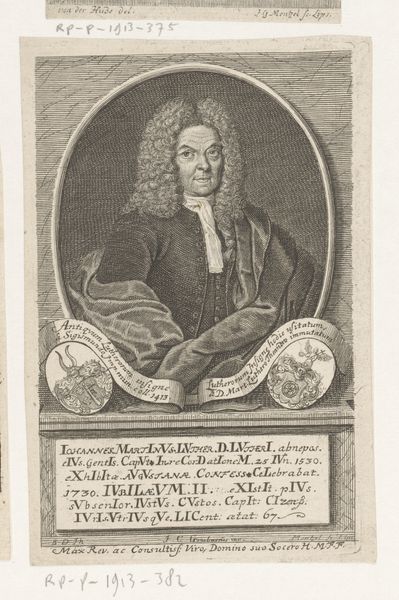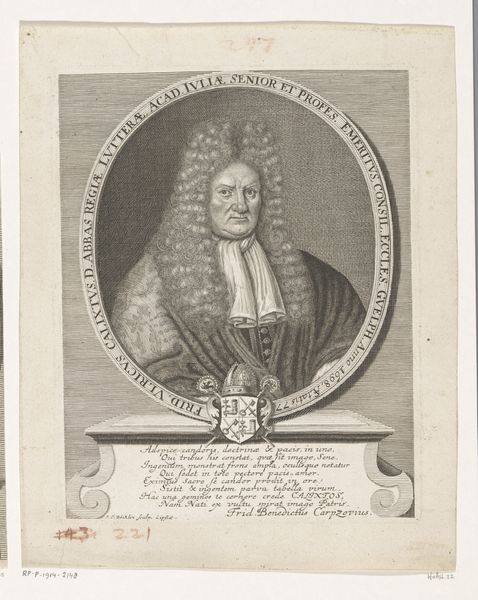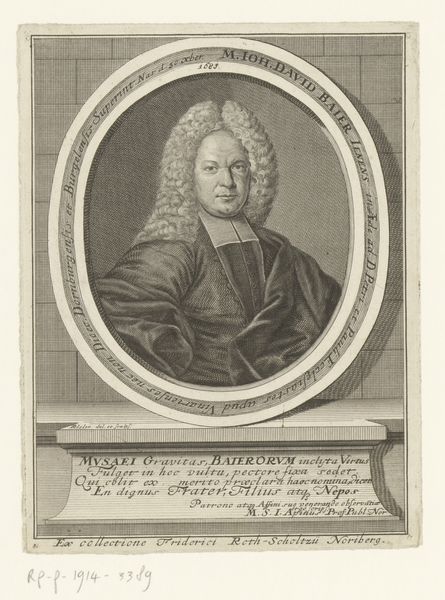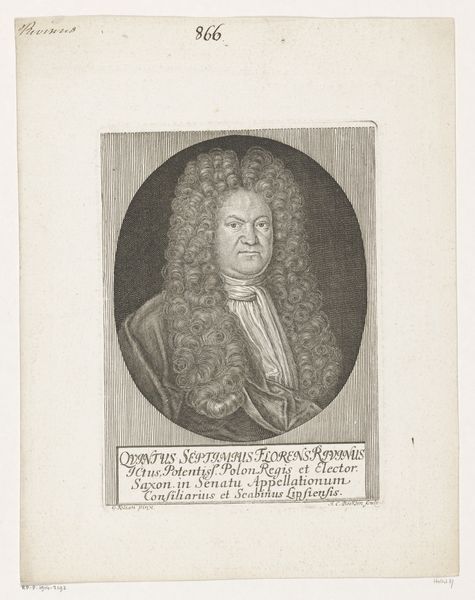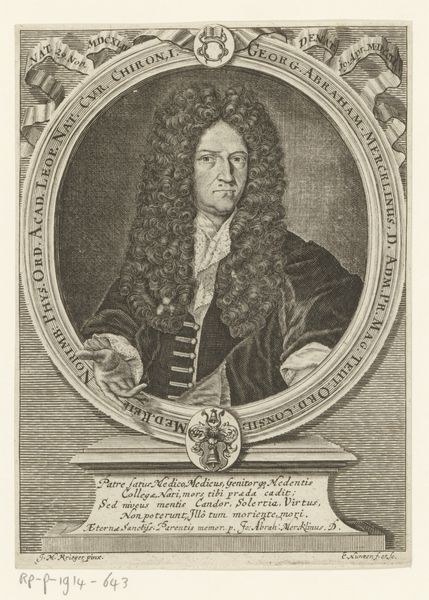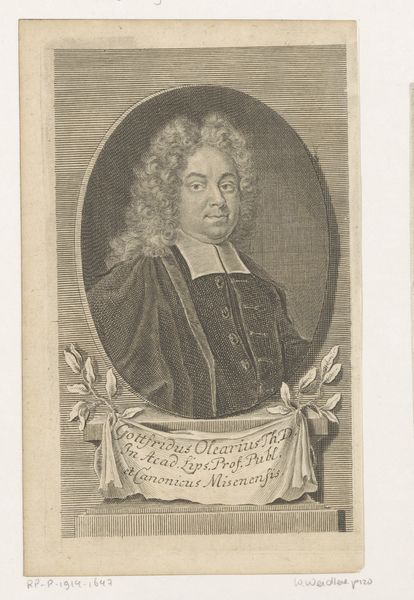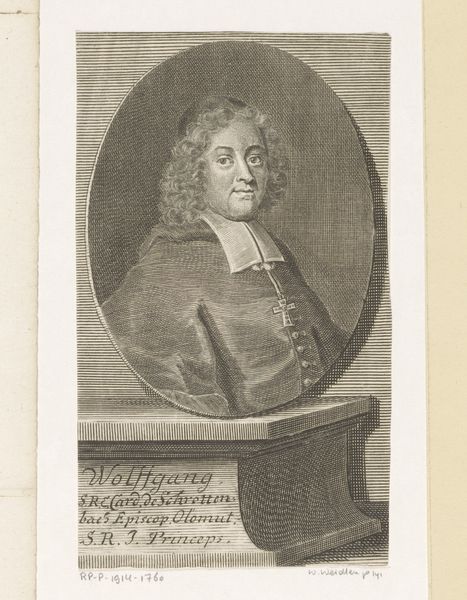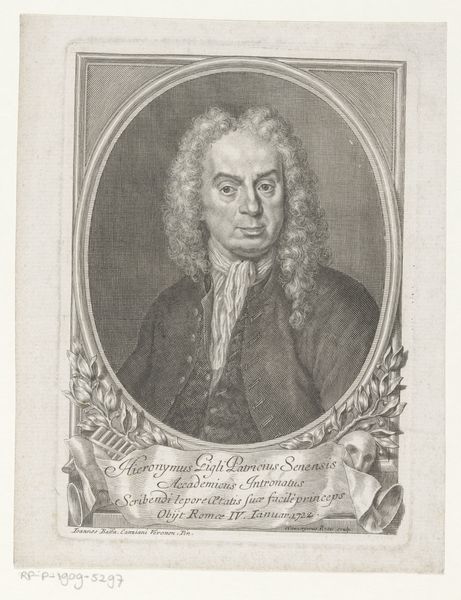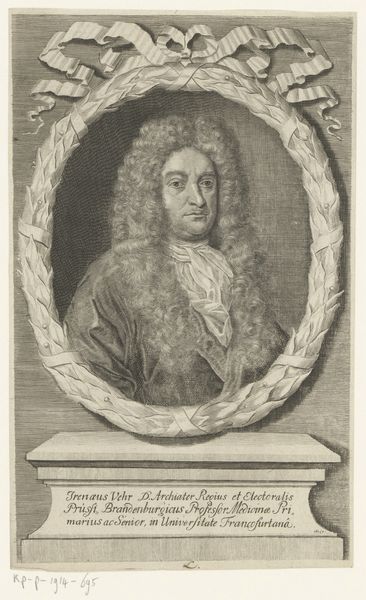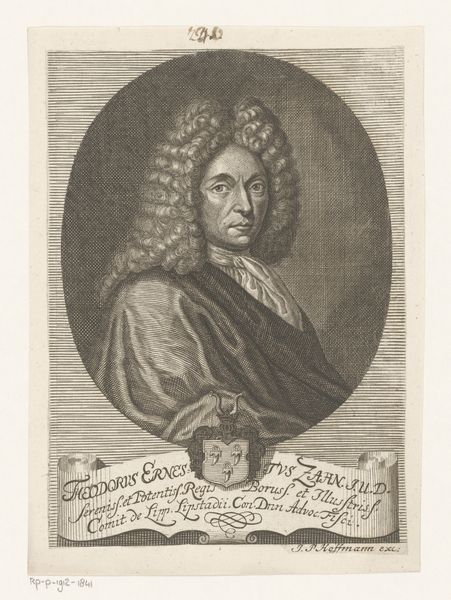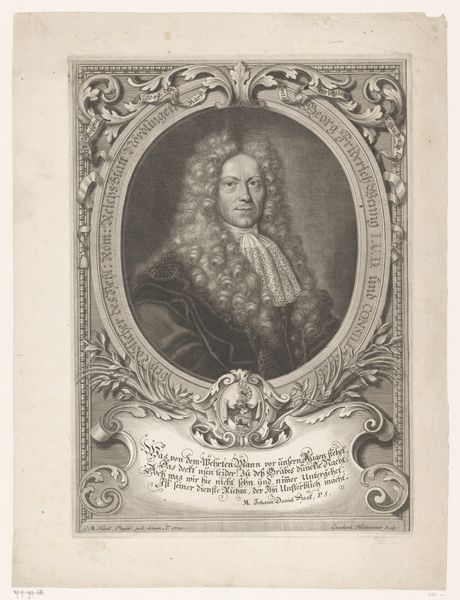
print, paper, engraving
#
portrait
#
aged paper
#
toned paper
#
baroque
# print
#
old engraving style
#
paper
#
limited contrast and shading
#
history-painting
#
engraving
Dimensions: height 154 mm, width 93 mm
Copyright: Rijks Museum: Open Domain
Johann Georg Mentzel made this portrait of Johann Carl Naeve, likely sometime in the early 18th century, using engraving. This process involves cutting lines into a metal plate, inking the surface, and then wiping it clean so that the ink remains only in the incised lines. When printed, the image emerges from the contrast between the inked lines and the blank paper. Consider the time and skill needed to create this piece. The fine lines, built up to create the dark tones of the face and wig, would have required immense precision. The controlled handling of the burin, the engraving tool, and the printing press were highly specialized skills that only a trained artisan would possess. This was a pre-industrial process, of course, yet it was also a business. Mentzel would likely have made many such portraits, operating within a system of commissions and sales. So even in this relatively humble print, we can see the seeds of modern industrial production, where artistry and labor intertwine with economics and social status. By attending to materials and making, we gain a richer understanding of its cultural significance, and how these elements challenge traditional distinctions between art and craft.
Comments
No comments
Be the first to comment and join the conversation on the ultimate creative platform.
